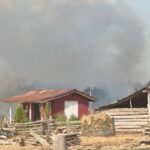Le procès pour agression sexuelle impliquant cinq anciens membres de l’équipe canadienne de hockey junior de 2018 est entré dans sa deuxième semaine éprouvante au palais de justice de London, marquée par un contre-interrogatoire intense qui s’est étalé sur plusieurs jours. La plaignante, identifiée uniquement comme E.M. pour des raisons juridiques, a fait face à un questionnement implacable des avocats de la défense représentant Daniel Brown, Dillon Dubé, Cal Foote, Alex Formenton et Michael McLeod – tous accusés d’agression sexuelle suite à un incident survenu dans un hôtel de London en juin 2018.
Le contre-interrogatoire marathon, qui a débuté jeudi dernier, a vu les avocats de la défense remettre méthodiquement en question les souvenirs d’E.M. concernant les événements de cette nuit-là. Me Megan Savard, représentant Dillon Dubé, a passé un temps considérable mardi à examiner les incohérences entre les déclarations antérieures d’E.M. à la police et son témoignage actuel, particulièrement concernant son niveau d’intoxication et ses interactions avec les différents accusés tout au long de la soirée.
“Le processus de contre-interrogatoire a été exceptionnellement approfondi,” a remarqué l’analyste juridique Patricia Montrose, qui a observé les procédures. “Les équipes de défense exercent leur droit de tester la fiabilité du témoignage, tandis que la Couronne est intervenue à plusieurs reprises lorsque le questionnement s’approchait des domaines protégés par les lois canadiennes sur la protection des victimes d’agression sexuelle.”
Selon les documents judiciaires, après un gala de Hockey Canada le 18 juin 2018, plusieurs joueurs et E.M. se sont rassemblés dans un bar du centre-ville avant de retourner dans une chambre d’hôtel. L’agression sexuelle présumée s’est produite aux premières heures du 19 juin. L’affaire a attiré l’attention nationale non seulement en raison de son lien avec le vénéré programme de hockey junior du Canada, mais aussi parce qu’elle met en lumière les questions de consentement et de responsabilité dans la culture sportive.
La plaignante a gardé son calme pendant les questions sur les messages texte échangés avec des amis après l’incident, y compris des messages que les avocats de la défense suggèrent comme démontrant des récits incohérents concernant le consentement. Les procureurs de la Couronne se sont opposés à plusieurs lignes de questionnement qu’ils jugeaient inutilement invasives de la vie privée d’E.M.
La juge Johanne Morissette a soigneusement géré l’atmosphère de la salle d’audience, permettant un contre-interrogatoire substantiel tout en imposant des limites aux questions qui pourraient violer les dispositions de protection des victimes d’agression sexuelle. Ces protections juridiques sont conçues pour empêcher que l’histoire sexuelle d’une plaignante soit utilisée pour suggérer un consentement ou miner sa crédibilité.
“Ce que nous voyons est la tension fondamentale dans les cas d’agression sexuelle,” a expliqué Dr. Elizabeth Sheehy, professeure émérite à l’Université d’Ottawa et experte en droit canadien sur les agressions sexuelles. “La défense a le droit de tester les preuves, tandis que les plaignantes ont besoin de protection contre un questionnement inutilement traumatisant ou non pertinent sur leur histoire sexuelle.”
Le procès a attiré quotidiennement des foules de spectateurs et de représentants des médias au palais de justice

























